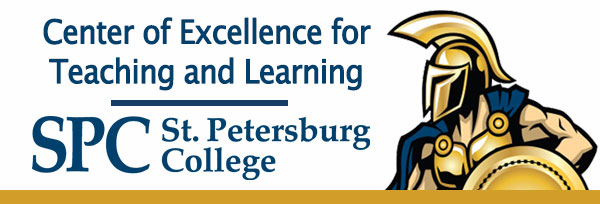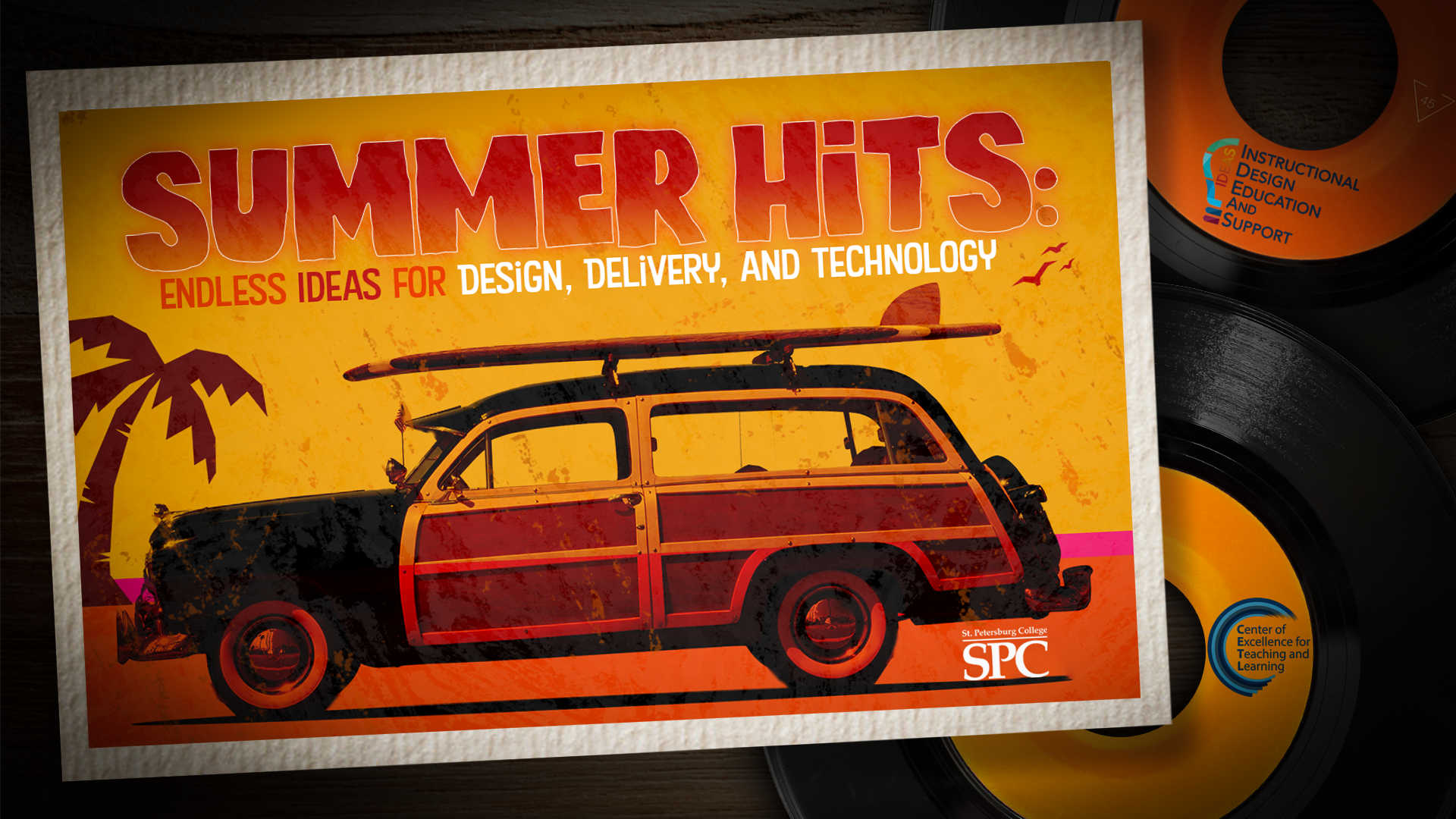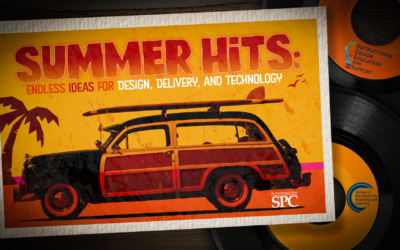Summer Institute Session 3: Metacognitive Strategies
To become self-directed learners, students must learn to assess the demands of the task, evaluate their own knowledge and skills, plan their approach, monitor their progress, and adjust their strategies as needed. (Ambrose et al., 2010)
According to Flavel (1979), metacognition is “the individual’s own awareness and consideration of his or her cognitive processes and strategies.”
There are two types of metacognition:
- Thinking about the knowledge (i.e., subject, topic, concept)
Example: The body of knowledge that makes up the subject of trigonometry
i.e., types of angles, ratios, tangent, sine, cosine, etc., versus - Thinking about how we manage and acquire our learning (i.e., tasks, strategies)
Example: How I best learn trigonometry
i.e., an auditory learner would use recorded audio lessons or podcasts, employed full-time person needs a highly organized study schedule
Common Learning Tasks – Strategies to Promote Metacognition
During the webinar, a number of strategies for infusing metacognition into learning were covered.
- Notetaking using Cornell Notes: The Cornell Notes system (also Cornell note-taking system, Cornell method, or Cornell way) is a note-taking system devised in the 1940s by Walter Pauk, an education professor at Cornell University. Pauk advocated its use in his best-selling book How to Study in College. The five steps of the Cornell Notetaking System are Record, Reduce, Recite, Reflect, and Review. Visit this page from the University of Massachusetts for detailed instructions on how to take Cornell Notes.
Cornell Notetaking Template (automatic download) - Exam Wrapper: Also known as a “Cognitive Wrapper” or an “Assessment Wrapper”, an Exam Wrapper is a metacognition reflection worksheet designed to encourage students to process their graded exams more deeply. These exam wrappers direct students to review their performance and the instructor’s feedback). They include reflective questions about the student’s performance on the exam with the goal of identifying what the student did or didn’t do to prepare for the exam and how changing those behaviors can help in the future. A tool that can be used to easily create and deliver exam wrappers in your online course is the SPC Survey Builder Tool.
- Project Plan: Long term projects can be very challenging for students as they often are not skilled at organizing and planning for these involved assignments. Asking students to map out their plan is a very helpful strategy to get them on track and keep them there. Although paper and pencil could easily be used for this project plan, there are a number of digital tools that can be used for project mapping. Diagam Map is a diagramming tool that is very useful for mapping out projects in a visual way that helps students to see both the big picture of their project but also the details at every step.
- Writers Memo: A Writers Memo is a brief set of questions that is used to help the writer flesh out his ideas for the written assignment. Research papers can require a lot of thinking, planning and strategy. And students have a high volume of written assignments, so it can be very easy for them to get into autopilot mode and internalize the process. A Writer’s Memo is a way to get them more self-reflective and to help students transfer some of that internalized thinking into visual form. It also helps instructors to get a clearer picture on the strategies needed to help students move forward and refine our writing projects. Writer’s Memo Template (downloads when clicked)
- Presentations: Student presentations as an assignment benefit the presenter in significant ways. By doing presentations, students learn how to speak in front a group, how to prepare material for public presentation (whether in person or online), and the process of practicing the presentation (especially with feedback) improves their speaking skills. There are a number of applications that can be used to create presentations and one that is readily available to students at SPC is Sway
- Media/Website Review: The need for student media literacy is greater now than ever before. This idea is summed up in a quote from professor Bill Wattwood at Northeastern University. “The biggest challenges that we contend with today are privacy and misinformation and being able to separate fakes from facts, facts from fakes.” Assigning students a media or website review, and giving them the guidance they need to evaluate the correctness and usefulness of the information they explore, is a strong positive step toward media literacy. Faculty at California State University in Chico developed the test with an interesting acronym to help students quickly and efficiently evaluate media and websites. CRAAP which stands for: Currency, Relevance, Authority, Accuracy, and Purpose
- Sketchnoting: Sketchnoting, also commonly referred to as visual notetaking, is the creative and graphic process through which an individual can draw their thoughts with the use of illustrations, symbols, structures, and text. By combining drawing with the traditional method of using text, the result is information that is captured and communicated visually and artistically in a way that is meaningful to the individual who creates it.
- Thinking Routines: A thinking routine is a set of questions or a brief sequence of steps used to scaffold and support student thinking. Created at Harvard as part of Project Zero, researchers designed thinking routines to deepen students’ thinking and to help make that thinking “visible.” Thinking routines help to reveal students’ thinking to the teacher and also help students themselves to notice and name particular “thinking moves,” making those moves more available and useful to them in other contexts. Learn more about thinking routines at the Project Zero Thinking Routine Toolbox website.
- Debate: Debating important topics that are relevant and helpful to student learning in an atmosphere of reasoned argument and respectful discourse is an important technique for teaching and learning. Providing an interface for debate online can be very challenging. The tool Kialo is a robust online debate tool that has a robust free version that provides many options and configurations. Visit Kialo Online Debate Tool.
View the recording of the Metacognition Webinar
For more assistance, contact the IDEAS team: IDEAS@spcollege.edu
Resources provided during the presentation:
- Mentimeter
- Darling-Hammond, Linda, Austin, K., Cheung, M., & Martin, D. (2003). Thinking about thinking: Metacognition. The learning classroom: Theory into practice. Stanford University School of Education.
- Note-taking document Metacognitive Strategies (Note – when you click this link, a document will download to your downloads folder)
- Cornell Note Taking Strategy
- Chapter Notes Template (Note – when you click this link, a document will download to your downloads folder)
- Cognitive Wrappers: Using Metacognition and Reflection to Improve Learning
- Survey Builder
- The Easy Guide to Process Mapping
- Diagram App
- The Writer’s Memo
- Writer’s Memo Template (Note – when you click this link, a document will download to your downloads folder)
- Sway
- Evaluating Web Resources, a multidisciplinary guide on evaluating research sources, especially resources found on the World Wide Web (North Carolina State University)
- 11 Resources To Boost Student Media Literacy:
- What are Sketchnotes? (Mike Rohde):
- Making Thinking Visible
- Project Zero’s Thinking Routines:
- Easy PZ with the Smithsonian: Engaging Students in Inquiry with Project Zero:
- Kialo




